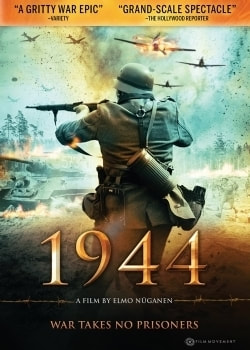Home | Chronology |
|
1944
"With advances in Burma, New Guinea and Guam, Japan began its last offensive in China, capturing further territory in the south to add to the acquisitions made in central and northern areas following the invasion of 1938. However, their control was limited to the major cities and lines of communication, and resistance - often led by the Communists - was widespread. The Allied advance in Italy continued with landings at Anzio, in central Italy, in January. It was a static campaign. The Germans counter-attacked in February and the fighting saw the destruction of the medieval monastery at Monte Cassino after Allied bombing. Only at the end of May did the Germans retreat from Anzio. Rome was liberated in June, the day before the Allies' 'Operation Overlord', now known as the D-Day landings. On 6 June - as Operation Overlord got underway - some 6,500 vessels landed over 130,000 Allied forces on five Normandy beaches: codenamed Utah, Omaha, Gold, Juno and Sword. |
|
Some 12,000 aircraft ensured air superiority for the Allies - bombing German defences, and providing cover. The pessimistic predictions that had been made of massive Allied casualties were not borne out. On Utah beach 23,000 troops were landed, with 197 casualties, and most of the 4,649 American casualties that day occurred at Omaha beach, where the landing was significantly more difficult to achieve, meeting with fierce German resistance.
Overall, however, the landings caught the Germans by surprise, and they were unable to counter-attack with the necessary speed and strength. Anything that was moving and German was liable to be attacked from the air.
Despite this, in the weeks following the landings Allied progress was slowed considerably, by the narrow lanes and thick hedgerows of the French countryside. Nevertheless, Cherbourg was liberated by the end of June. Paris followed two months later.
Hitler's troubles were compounded by a Russian counterattack in June. This drove 300 miles west to Warsaw, and killed, wounded or captured 350,000 German soldiers. By the end of August the Russians had taken Bucharest. Estonia was taken within months, and Budapest was under siege by the end of the year.
One glimmer of light for Germany came in the Ardennes, in France, where in December a German counteroffensive - the Battle of the Bulge - killed 19,000 Americans and delayed the Allies' march into Germany."
Source: BBC
Overall, however, the landings caught the Germans by surprise, and they were unable to counter-attack with the necessary speed and strength. Anything that was moving and German was liable to be attacked from the air.
Despite this, in the weeks following the landings Allied progress was slowed considerably, by the narrow lanes and thick hedgerows of the French countryside. Nevertheless, Cherbourg was liberated by the end of June. Paris followed two months later.
Hitler's troubles were compounded by a Russian counterattack in June. This drove 300 miles west to Warsaw, and killed, wounded or captured 350,000 German soldiers. By the end of August the Russians had taken Bucharest. Estonia was taken within months, and Budapest was under siege by the end of the year.
One glimmer of light for Germany came in the Ardennes, in France, where in December a German counteroffensive - the Battle of the Bulge - killed 19,000 Americans and delayed the Allies' march into Germany."
Source: BBC
Film Dramatizations
